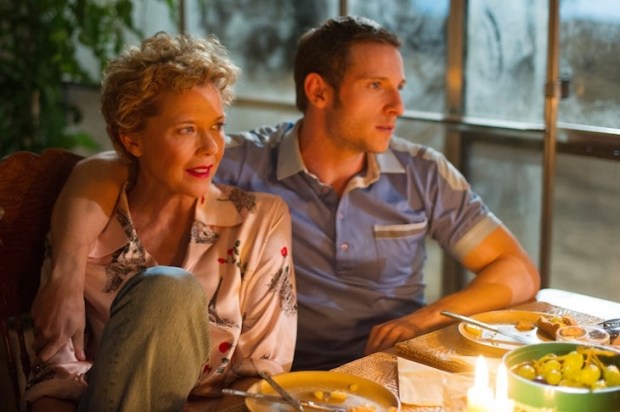Inspired by Justin Bieber’s Never Say Never (2011), Katy Perry’s Part of Me (2012) and One Direction’s This Is Us (2013), Nick Cave has released a documentary about himself. No doubt he wanted to prove that this old dog has new tricks. The whole movie is shot in candy-crushed 3D to appeal to the emteevee-ohmigod generation. He talks about how great it was to work with Rihanna and Ludacris: ‘The thing about thoseguys is…’
Nah, sorry, I’m just kidding with you. None of that is true, apart from the bit about Nick Cave releasing a documentary about himself. It’s called 20,000 Days on Earth. And, much like the man himself, it is gloriously oblique. It takes place — apparently — over the course of a day spent recording his last album with the Bad Seeds, Push the Sky Away. But it stretches those 24 hours beyond their normal bounds and into weird areas of space-time. There’s concert footage and Nabokov and psychiatry and Ray Winstone. This is not one for the Belieber in your family.
How familiar are you with Cave? If you want the basics about this punkish Australian musician, turned novelist and screenwriter and more, then you could always just ‘google it’, as he likes to say. But even that’s not necessary for watching 20,000 Days on Earth. The 20,000 days of the title are those that, by his own calculations, Cave has spent in existence. A rat-a-tat credits sequence alights on all of the main points: the bands, the heroin abuse, the infatuation with Elvis etc.
Yet all that really matters is that Cave is intensely cinematic. The first scene of the movie has him rising from bed and padding to the bathroom mirror. He stares at himself. His hair is too uniformly black for his 56 years, yet it doesn’t look dyed. His features seem to be pulled towards his nose, which sticks out like the peak of a meringue. His body is as lean and as angular as Nosferatu. An anthropologist would struggle to decide whether Cave is the missing link or the next stage of evolution. He’s not like the rest of us.
Except he does live in Brighton, the setting of his 2009 novel The Death of Bunny Munro, with his second wife, his children and 100,000 books and photographs. The documentary’s directors, Iain Forsyth and Jane Pollard, seem to enjoy showing Cave at home. After the encounter with the mirror, he glides into his writing room and begins to tap song lyrics on an old typewriter. From the movement of his fingers to the cut of his high-collared shirt, it’s all so precise and predetermined. This is domestic life as Kubrick would have shot it.
All of which may sound achingly self-conscious, but that’s the point. Cave is a self-conscious kind of guy. ‘I didn’t like what I was,’ he explains — so he decided to become a rock star. The typewriter and the shirts are all part of the same performance. In many respects, this is as much a documentary about artifice as Orson Welles’s F for Fake (1973).
Or is it a fictional film about reality? Cave and his supporting crew keep on shifting the tone. One minute it’s gravelly philosophy; the next it’s a pair of stuffed budgerigars in his car boot. The po-faced moments are undercut by poo jokes, so that you don’t know whether they were po-faced to begin with.
Come to think of it, this is much how Cave approaches his songwriting. He describes it as ‘counterpoint’ at one point in the movie, or ‘putting a small child in a room with a Mongolian psychopath, and seeing what happens’. Why not have a scene of him eating eels with his musical collaborator, and one of the other standout characters of 20,000 Days on Earth, Warren Ellis? Why not have Kylie Minogue materialise in the back of his Jaguar to talk about waxworks? Not all of it succeeds, but it all adds to the texture of the movie. The patchwork quilt keeps on growing.
And what a comfort it is to some people. 20,000 Days on Earth climaxes with two live performances by Cave and his band — one in some sweaty dancehall, the other in the Sydney Opera House. ‘I’m vibrating!’ he wails, and the crowd vibrates along with him. ‘Look at me now!’ and the crowd looks. As the Coasters once put it: baby, that is rock and roll.





Comments